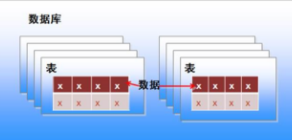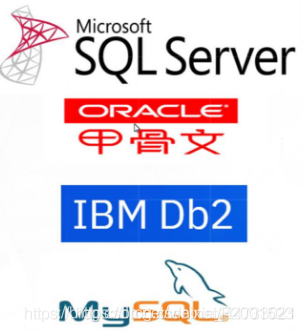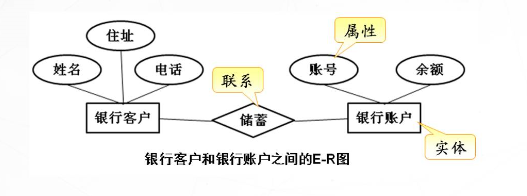Article Directory
One, the basic concept of the database
1. Data
- Symbol record
- Including data, text, graphics, images, sounds, file records, etc.
- Store in a unified format in the form of "records"
2. Table
- Organize different records together
- Used to store specific data
3. Database
- A collection of tables is a warehouse for storing data
- A collection of related data stored in a certain organization

4. Database Management System (DBMS)
- It is a system software that realizes effective organization, management and access to database resources
5. Database system
- It is a man-machine system consisting of hardware, os, database, DBMS, application software and database users
- Users can operate the database through DBMS or applications

2. History of database system development
1. The first generation database
- Since the 1960s, the first generation of database systems came out
- It is a database system of hierarchical model and network model
- Provides strong support for unified management and sharing of data
2. The second generation database
- In the early 1970s, the second generation of databases-relational databases began to appear
- In the early 1980s, IBM's relational database system DB2 came out, and began to gradually replace hierarchical and mesh model databases, becoming the mainstream of the industry
- So far, relational database systems have occupied the main position of database applications
3. The third generation database
- Since the 1980s, new database systems adapting to different fields have continuously emerged. Object-oriented database systems have strong practicability and wide adaptability.
- In the late 1990s, a situation in which multiple database systems jointly supported applications was formed
- Some new elements have been added to the mainstream database system
- For example, the "relation-object" database model supported by Oracle
3. Today's mainstream databases
1. Introduction to mainstream databases
SQL Server (product of Microsoft Corporation)
- For Windows operating system
- Simple and easy to use
Oracle (Oracle company product)
- For all major platforms
- Safe, perfect, complicated operation
DB2 (product of IBM)
- For all major platforms
- Large, safe and complete
MySQL (acquired by Oracle)
- Free, open source, small size

2. Relational database
Relational database-1
- Relational database system is a database system based on relational model
- The data structure of the relational model uses a simple and easy to understand two-dimensional data table
- The relational model can be represented by a simple "Entity-Relationship" (ER) diagram
- The ER diagram contains three elements: entity (data object), relationship and attribute

Relational database-2
entities
- Also called an instance, it corresponds to an "event" or "thing" that can be distinguished from other objects in the real world
- Such as bank customers, bank accounts, etc.
Attributes
- A certain characteristic of an entity, an entity can have multiple attributes
- For example, each entity in the "bank customer" entity set has attributes such as name, address, and telephone number
contact
- Correspondence between entity sets is called connection, also called relationship
- For example, there is a "savings" relationship between bank customers and bank accounts
The collection of all entities and their connections constitutes a relational database
Relational database-3
- The storage structure of the relational database is a two-dimensional table
- In each two-dimensional table
- Each row is called a record, used to describe the information of an object
- Each column is called a field, used to describe an attribute of the object

3. Relational database applications
Relational Database
- Oracle,MySQL
- SQLServer、Sybase
- lnformix、access
- DB2、FoxPRO
Application examples
- 12306 User Information System
- Taobao account system
- Unicom mobile phone number information system
- Bank User Account System
- Website User Information System
4. Introduction to non-relational databases
Non-relational databases are also called NoSQL (Not Only SQL)
The stored data is not based on the relational model and does not require a fixed table format
Advantages of non-relational databases
- The database can be read and written with high concurrent
- Efficient storage and access to massive data
- Database has high scalability and high availability
Commonly used non-relational databases: Redis, mongoDB, etc.
5. Introduction to MySQL database
- A popular open source relational database
- Oracle products
- Comply with GPL agreement, free trial and modification
Features:
- Excellent performance and stable service
- Open source, no copyright restrictions, low cost
- Multi-threaded, multi-user
- Based on C/S (client/server) architecture
- Safe and reliable
6. MySQL Business Edition and Community Edition
- MySQL Business Edition is developed and maintained by MySQL AB, and requires payment to use
- MySQL Community Edition is developed and maintained by MySQL developers and enthusiasts scattered all over the world, and can be used for free
The difference between the two:
- The commercial version has stricter organization management and testing and will be more stable than the community version
- The commercial version does not comply with the GPL, and the community version complies with the GPL and can be used for free
- The commercial version can get 7*24 hours of service, while the community version does not
7. MySQL product camp
-
The first camp: 5.0-5.1 camp, can be said to be the continuation of early products
-
The second camp: The 5.4-5.7 camp integrates storage engines developed by MySQL AB, the community, and third-party companies to improve performance
-
The third camp: 6.0-7.1 camp, which is the MySQL Cluster version, developed to meet the needs of database clustering in the new era
- Download URL
http://www.dev.mysql.com/downloads
- Download URL
Fourth, install Mysql5.7 database
Prepare the installation package Mysql package

1. Install the dependent package
[root@server1 ~]#yum -y install \
ncurses \
ncurses-devel \
bison \
cmake
2. Create a non-loginable user
[root@server1 ~]# useradd -s /sbin/nologin mysql
3. Unzip the Mysql package
[root@server1 ~]#tar -zxvf mysql-boost-5.7.20.tar.gz
4. cmake configuration
[root@server1 ~]#cd mysql-5.7.20/
[root@server1 mysql-5.7.20]# cmake \
-DCMAKE_INSTALL_PREFIX=/usr/local/mysql \ #安装目录 安装路径
-DMYSQL_UNIX_ADDR=/usr/local/mysql/mysql.sock \ #指定套接字文件的存储路径套接字:客户端访问mysql数据库的一个接口
-DSYSCONFDIR=/etc \ #配置my. cnf的目录 配置文件路径,(根目录)
-DSYSTEMD_PID_DIR=/usr/local/mysql \ #主服务进程所在路径 (进程文件目录)
-DDEFAULT_CHARSET=utf8 \ #默认字符集
-DDEFAULT_COLLATION=utf8_general_ci \ #默认编码
-DWITH_INNOBASE_STORAGE_ENGINE=1 \ #启用InnoDB引擎
-DWITH_ARCHIVE_STORAGE_ENGINE=1 \ #启用ARCHIVE引擎
-DWITH_BLACKHOLE_STORAGE_ENGINE=1 \ #启用BLACKHOLE引擎
-DWITH_PERFSCHEMA_STORAGE_ENGINE=1 \ #启用perfschema引擎
-DMYSQL_DATADIR=/usr/local/mysql/data \ #数据存储路径 (数据库目录)
-DWITH_BOOST=boost \ #boost库是为C++语言标准库提供扩展的一些C++程序库的总称
-DWITH_SYSTEMD=1 #这是mysql5.7原生支持systemd的选项,如果用systemctl启动,就必须开启
5. Compile and install
make && make install
6. Edit the configuration file
[root@server1 ~]# vi /etc/my.cnf
[client] 客户端
port = 3306 访问端口
default-character-set = utf8 默认字符集
socket = /usr/local/mysql/mysql.sock 套接字
[mysql] 运行用户
port = 3306 运行端口
default-character-set = utf8
socket = /usr/local/mysql/mysql.sock
[mysqld] 程序
user = mysql 运行用户
basedir = /usr/local/mysql 根目录
datadir = /usr/local/mysql/data 用户目录
port = 3306
character_set_server = utf8
pid-file = /usr/local/mysql/mysqld.pid 服务器配置字符
socket = /usr/local/mysql/mysql.sock 进程文件
server-id = 1
sql_mode=NO_ENGINE_SUBSTITUTION,STRICT_TRANS_TABLES,NO_AUTO_CREATE_USER,NO_AUTO_VALUE_ON_ZERO,NO_ZERO_IN_DATE,NO_ZERO_DATE,ERROR_FOR_DIVISION_BY_ZERO,PIPES_AS_CONCAT,ANSI_QUOTES
7. Database authority configuration, owner, group
[root@server1 mysql-5.7.20]# chown -R mysql:mysql /usr/local/mysql/
[root@server1 mysql-5.7.20]# chown mysql:mysql /etc/my.cnf

8. Initialize the database
[root@server1 ~]# mysqld \
--initialize-insecure \ #生成一个空密码,不配置系统会自动生成一个密码
--user=mysql \
--basedir=/usr/local/mysql \
--datadir=/usr/local/mysql/data

9. Copy files and start the service
[root@server1 ~]# cd /usr/local/mysql/
[root@server1 mysql]# cp usr/lib/systemd/system/mysqld.service /usr/lib/systemd/system
[root@server1 mysql]# cd
[root@server1 ~]# systemctl enable mysqld
[root@server1 ~]# systemctl start mysqld
[root@server1 ~]# systemctl status mysqld
10. Set a password
[root@server1 ~]# mysqladmin -uroot -p password 'fa123'
[root@server1 ~]# mysql -uroot -p
